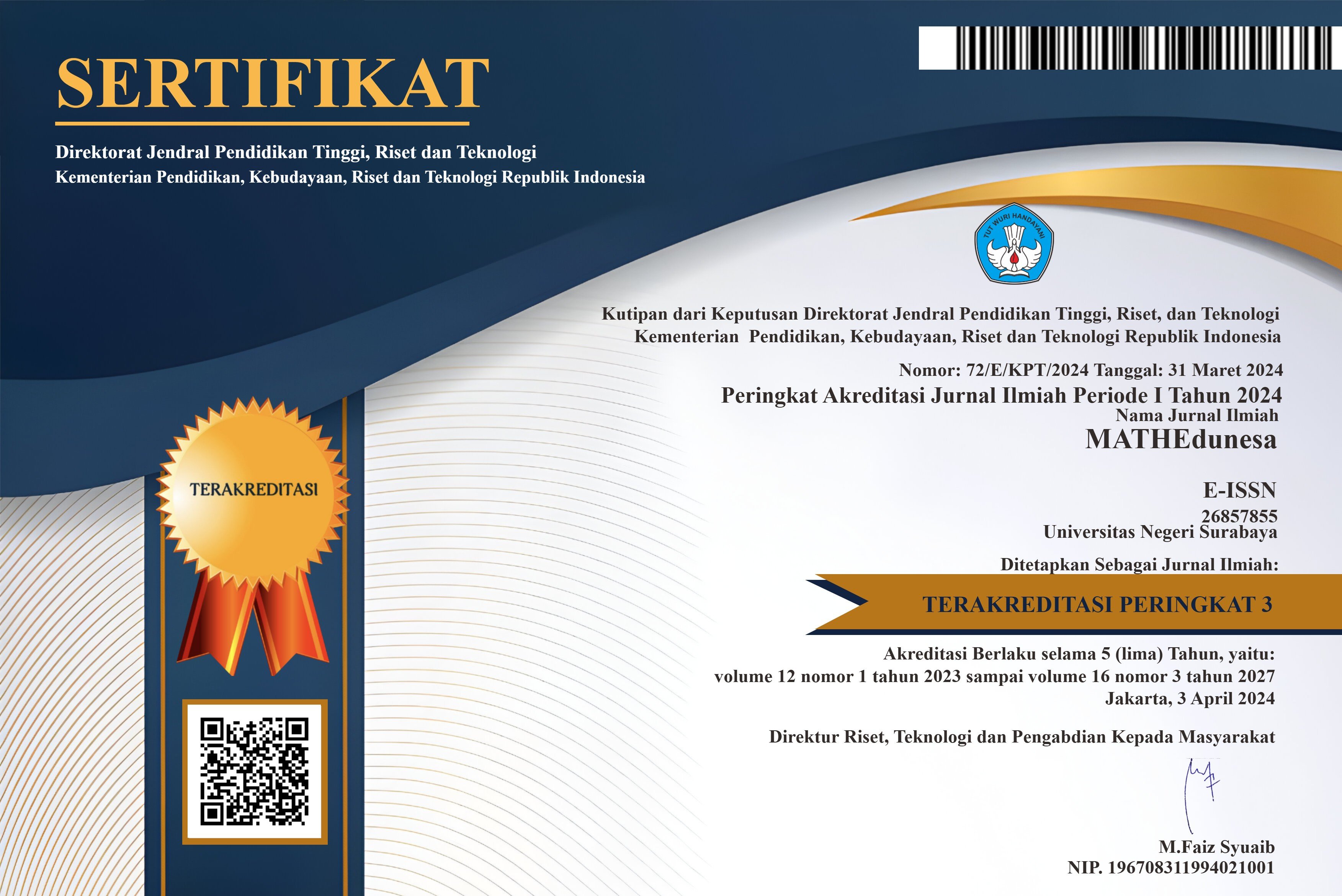DOI:
https://doi.org/10.26740/mathedunesa.v7n1.p%25pAbstract
Abstract
In learning process, teacher have to pay attention to the level of students ability, because somestimes the students encounter difficulties in solving problem because they have not grasped correctly what is taught. In Junior High School Level, one of competences to be mastered is the ability to solve algebraic counting operations. To minimize the students’ difficulties in solving problem of algebraic counting operations, it need guidance in the form of directives or instructions to guide students find the solution. Scaffolding is a help, whether in the form of guidance, direction, giving examples, or other actions provided by adults or peers who are more qualified in order to help students solving the assigned tasks. Scaffolding is applied to help students develop their thinking process. Students who were initially familiar with routine questions then develop their ability in solving problems through giving higher order thinking questions. Students need scaffolding to maximize their ability so that they can reach the potential level.
This study is descriptive in nature using qualitative approach. It was conducted at SMP Negeri 22 Surabaya. The purpose of this study is twofold, namely difficulties experienced by students in solving higher order thinking problem of algebra and the appropriate scaffolding given to overcome the students’ difficulties. In this study there are three research subjects consist of students with high, medium, and low mathematics competence.
Based on the results of data analysis, it can be stated that students with high, medium, and low mathematics competence encounter difficulty in making mathematical models of sentences in the problem, completing the process, writing out the final results, and making solutions according to the given problem. The form of scaffolding given to overcome students difficulties is (1) explaining in the form of explaining the importance of making a supposition in turning sentences into mathematical sentence and giving a similar example in making the solution of the given problem. (2) reviewing in the form of asking students to read carefully and examine what is asked in the problem, question and answer to direct students to justify, and ask students to write the appropriate solution. (3) restructuring in the form of reading the problem by giving emphasis intonation on the important thing, and (4) developing conceptual hinking by asking students to connect what’s asked in the problem with the results obtained.
Keywords: scaffolding, difficulties, higher order thinking problem, algebra.
Downloads
Downloads
Published
Issue
Section
 Abstract views: 85
,
Abstract views: 85
, PDF Downloads: 140
PDF Downloads: 140




